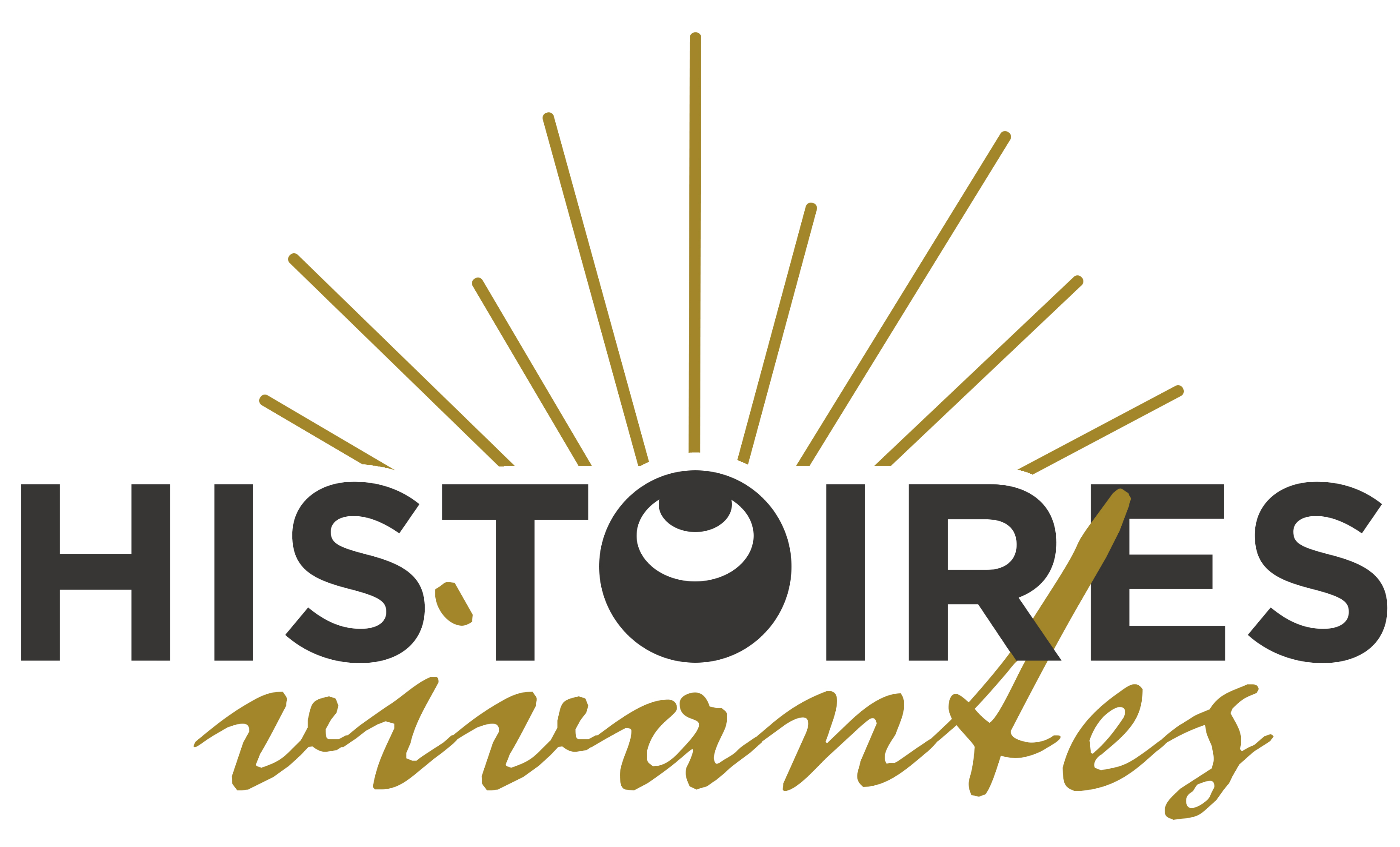Vous êtes ici : CHCSCFRLa rechercheProjets
- Partager cette page :
- Version PDF
Current projects
Living histories

The Histoires Vivantes (living histories) educational series is a project that was launched in 2016 by the Centre d’Histoire Culturelle des Sociétés Contemporaines (CHCSC). The first season of the series focuses on two research areas at the heart of the CHCSC’s work: L'illustration en questions (XIXe-XXIe) and Le cinéaste Joris Ivens (1898-1989), traducteur de son siècle. The project is a ‘scientific showcase’ for the CHCSC and a means of connecting with the general public and undergraduate students approaching the end of their degrees.
CHCSC project lead: Evanghelia Stead
Partner: Université d'Évry-val-d'Essonne
Project duration: 3 years (2016-2019)
Find out more
Beethoven's Fidelio: transfers, flows, appropriations (1798-21st century)

The purpose of this research training project was to reflect on three aspects of Beethoven’s only ‘opera’ (which has been the subject of discussion ever since it was first performed), namely transfers, flows and appropriations. The aim was to lay the foundations for international interdisciplinary reflection by mobilising input from a French-German scientific dialogue and engaging both early-career (doctoral and postdoctoral) and established researchers from different disciplinary backgrounds.
CHCSC project leads: Jean-Claude Yon and Caroline Moine
Partners: Georg Simmel Centre (EHESS), SLAM-RASM Lab (Évry Val d’Essonne University), Conservatoire National Supérieur de Musique et de Danse de Paris, Beethoven-Archiv (Bonn), Marc Bloch Centre (Berlin), Institut für Musikwissenschaft und Medienwissenschaft (Humboldt University) and Institut für Musikwissenschaft (Zurich University).
This project was supported by the following institutions: Centre Interdisciplinaire d’Etudes et de Recherches sur l’Allemagne (CIERA), the School Humanités of the Paris-Saclay University, the Mariann Steegmann Foundation.
Project duration: 2 years (2016-2018)
Find out more
ANR project – Transatlantic Cultures: a dictionary of transatlantic cultural history
 The Dictionnaire d’Histoire Culturelle Transatlantique (Dictionary of Transatlantic Cultural History) is an ongoing research project jointly supported by the Versailles Saint-Quentin-en-Yvelines University, the Sorbonne Nouvelle - Paris 3 University, the Universidade de São Paulo and the University of California, Berkeley. It aims to produce a digital encyclopedia on the subject of transatlantic flows. This innovative scientific and technological tool will be made available in four languages (English, Spanish, French, Portuguese) and will be used to analyse the dynamics of the Atlantic space and understand its role in the contemporary globalisation process.
The Dictionnaire d’Histoire Culturelle Transatlantique (Dictionary of Transatlantic Cultural History) is an ongoing research project jointly supported by the Versailles Saint-Quentin-en-Yvelines University, the Sorbonne Nouvelle - Paris 3 University, the Universidade de São Paulo and the University of California, Berkeley. It aims to produce a digital encyclopedia on the subject of transatlantic flows. This innovative scientific and technological tool will be made available in four languages (English, Spanish, French, Portuguese) and will be used to analyse the dynamics of the Atlantic space and understand its role in the contemporary globalisation process.Project lead: Anaïs Fléchet (CHCSC-UVSQ)
Partners: University of California, Berkeley (Department of History, Center for Latin American Studies), Versailles Saint-Quentin-en-Yvelines University (the Centre d’Histoire Culturelle des Sociétés Contemporaines was the project initiator), Sorbonne Nouvelle – Paris 3 University (Institut des Hautes Études de l’Amérique Latine – Centre de Recherche et de Documentation sur les Amériques), Universidade de São Paulo (Faculdade de Letras, Filosofia e Ciências Humanas, Escola de Comunicações e Artes).
This project is supported by the Agence Nationale de la Recherche (ANR’s Generic Call for Proposals 2015).
Funding instrument: Projet de Recherche Collaboratif International
Reference: ANR-15-CE27-0004-01
Project duration: 60 months (2015-2020)
Find out more
ANR project – DEF19: a dictionary of 19th-century French publishers

Drawing on several decades of research on the history of books and publishing, the Dictionnaire des éditeurs français du XIXe siècle (Dictionary of 19th-century French publishers) project aims to provide researchers with an exhaustive tool. The project outcome will be an interactive, living database synthesising all published and unpublished academic studies carried out in this field and listing all actors in the book publishing world. Coordinated by the CHCSC, this project also involves the Paris Ouest Nanterre La Défense University and two cultural institutions whose collections are key in publishing history research, namely the Bibliothèque nationale de France and the Archives Nationales. The aim is to contribute to a better understanding of the emergence of the model of mass culture, in which publishers played a major role during the 19th century.
Project lead: Jean-Charles Geslot (CHCSC-UVSQ)Partners: Versailles-Saint-Quentin-en-Yvelines University, Paris Ouest Nanterre La Défense University, Bibliothèque nationale de France, Archives Nationales.
This project is supported by the Agence Nationale de la Recherche (ANR’s Generic Call for Proposals 2014).
Project duration: 60 months (2014-2019)
Find out more
Programme FATES
FAst Climate Changes, New Tools To Understand And Simulate The Evolution of The Earth System

The FATES project aimed to study the natural global warming that was associated with an increase in greenhouse gases and a rise in sea levels at the end of the last ice age, between 10,000 and 20,000 years ago. The very rapid changes that took place during this deglaciation process were precisely dated and characterised through an analysis of natural climate archives (polar ice, marine and continental sediments, etc.). These data were then used as a benchmark to evaluate the climate models that we use today, and in particular to better assess the impact of these changes on European forests.
This project was supported by the Fondation BNP-Paribas.
Project coordinators: Valérie Masson-Delmotte, Pascale Braconnot, Christophe Colin, Christophe François, Christine Hatté and Matthieu Sourdeval (CHCSC, UVSQ)
Main partners: Paris Sud University, Versailles Saint-Quentin-en-Yvelines University, Institut Pierre Simon Laplace (IPSL), CNRS, Commissariat à l’Energie Atomique (CEA).
P2S theatre heritage

Theatre heritage produces a profuse and varied subject matter that is complex both to preserve and to analyse. This project aimed to promote the use of innovative technologies and creative valorisation to boost its dissemination and accessibility.
The P2S ‘Les patrimoines du spectacle: en scène!’ (theatre heritage) team conducted exploratory research on theatre heritage based on a modelled historiographical study and archives documenting half a century of theatrical history (1850-1900), a period when Paris dominated the international theatrical scene. The ten venues selected were the Palais Royal, Salle Louvois, Salle Ventadour, Théâtre des Variétés, Comédie-Française, Opéra-Comique, Théârte des Nouveautés, Salle Le Peletier, and the two Salles du Vaudeville. All located in concentric circles around the Rotonde des Arts du Spectacle, these theatres delineated 19th-century Paris’s theatreland and entertainment area. The objective was to build a prototype video game that would valorise to a wide audience the collections of the Bibliothèque nationale de France’s Département des Arts du Spectacle.
Project lead: Jean-Claude Yon (CHCSC-UVSQ)
Partners: Bibliothèque nationale de France (Département des Arts du Spectacle), Paragraphe Lab (Paris 8 University), Scènes et Savoirs Lab (Paris 8 University), LABEX Arts-H2H.
Project duration: 12 months (2014-2015)
This project was supported by the Fondation des Sciences du Patrimoine.
Study of the visitor experience: Galerie de l’Histoire du Château de Versailles

The Galerie de l’Histoire du Château de Versailles opened to the public in 2012. It serves as a prologue to the tour of the Grands Appartements and consists of eleven rooms, which are equipped with the latest mediation devices and contain chronological, genealogical and thematic collections, models, films and other materials. The Établissement Public du Château, du Musée et du Domaine National de Versailles welcomes more than 6 million visitors every year, and this figure is rising. Nearly 70% of these visitors come from abroad (North America, Europe, Latin America and Asia). The aim of this study was to examine the international (Chinese, English-speaking, Spanish-speaking) visitor experience at a complex tourist attraction (complex in terms of the collections housed, temporality, famous figures, buildings and sites) in order to better understand the visitor’s representations, behaviours and expectations from the perspective of the multilingual mediation mechanisms (French, English, Spanish) used as tools for the dissemination of knowledge. The project builds on previous studies and public surveys conducted by the Observatoire Permanent des Publics du Château de Versailles.
Project leads: Isabelle Brianso (CHCSC, UVSQ) and Sylvie Catellin (CHCSC, UVSQ) / Denis Verdier-Magneau (director of cultural development, Établissement Public du Château, du Musée et du Domaine National de Versailles) and Lionel Dupont (Observatoire des Publics, Établissement Public du Château, du Musée et du Domaine National de Versailles).Partners: Versailles Saint-Quentin-en-Yvelines University, Établissement Public du Château, du Musée et du Domaine National de Versailles.
Project duration: 26 months (2014-2017).
This project was supported by the Fondation des Sciences du Patrimoine.
OFabulis

The OFabulis project aimed to test the potential of real-time 3D coupled with a multi-user adventure and role-play game to showcase cultural heritage, particularly to an audience familiar with this type of game but not with visiting monuments. The aim was to promote heritage through the creation of 3D virtual worlds using the latest technological innovations in online role-play games, alternate reality games and adventure games.
Project coordinator: Edwige Lelièvre (CHCSC)
Partners: Centre des Monuments Nationaux, Entreprise Emissive, IUT de Vélizy (UVSQ).
Project duration: 2013-2014.
This project was supported by the Centre des Monuments Nationaux and Cap Digital.
Find out moreOfabulis website
TransfoPress: transnational study of foreign language press
 ‘Transfopress’ is an international network of researchers working to highlight a material heritage object that has until now been almost completely ignored by researchers, namely the press published in languages other than the national language(s). The aim is to update the historiography both of the press and of the construction of national identities and cultures.
‘Transfopress’ is an international network of researchers working to highlight a material heritage object that has until now been almost completely ignored by researchers, namely the press published in languages other than the national language(s). The aim is to update the historiography both of the press and of the construction of national identities and cultures.Project coordinator: Christian Delporte (CHCSC)
Partners: Bibliothèque nationale de France, La Contemporaine (formerly BDIC), Universidade Estadual Paulista (UNESP), São Paulo (Brazil).
This project is supported by the Fondation des Sciences du Patrimoine.
Find out more
ANR project – NAT-CAT: environmental changes and analytical categories

This project aimed to examine the categories that inform our perceptions of environmental change as well as the dynamics that determine the continuities and discontinuities between human beings and the environment. The main objective was to move beyond the dualism between environmental change and social and cultural change that informs Western ontologies by understanding how social and cultural change is produced, and consequently how it can be recomposed.
Coordinator: Grégory Quenet (CHCSC)
Partners: LABTOP (Paris 8) and PHICO (Paris 1).
Project duration: 2014-2018
This project was supported by the ANR and the Sociétés et Changements Environnementaux programme (SOC&ENV, 2013 edition).
Find out more
Grégory Quenet was also project coordinator for ‘Histoire de l’adaptation aux changements environnementaux et climatiques en France et dans ses colonies, 1750-1860’.
Funding: IUF
Project duration: 2011-2015
The Humanités Environnementales portal
ANR project – CLASSIC, climate, agriculture and siberian society: what evolution?

As its name suggests, this project aimed to understand the impacts of climate change both on the environment and on Siberian society as well as the feedback loops in an innovative transdisciplinary effort to combine the exact sciences with the human and social sciences.
CHCSC team: Matthieu Sourdeval, Isabelle Brianso
Project duration: 2011-2015
Find out more
ESTIM Programme
 The ESTIM Programme seeks to develop innovative learning and scientific mediation methods based on experimentation, interdisciplinarity and new practices (particularly in the digital domain). The aim is to inspire people to take up a career in science and technology by promoting equal access and facilitating universal uptake. Led by Universcience, ESTIM has been established with the support of 32 partners from the fields of culture, education, research, industry and the media.
The ESTIM Programme seeks to develop innovative learning and scientific mediation methods based on experimentation, interdisciplinarity and new practices (particularly in the digital domain). The aim is to inspire people to take up a career in science and technology by promoting equal access and facilitating universal uptake. Led by Universcience, ESTIM has been established with the support of 32 partners from the fields of culture, education, research, industry and the media.Find out more
History of the Paris-Saclay campus – Initiative d’Excellence funding award
 This project was part of a research initiative involving supervised master’s 1 and 2 students and a number of supervised cultural and scientific mediation project internship reports.
This project was part of a research initiative involving supervised master’s 1 and 2 students and a number of supervised cultural and scientific mediation project internship reports.Heritage at the heart of the Paris-Saclay campus:
- Raising awareness among higher education and research institutions, cultural organisations and businesses of the need to safeguard contemporary scientific and technological heritage
- Identifying, inventorying and documenting heritage objects in public and private research centres to create ‘heritage object files’ for the national PATSTEC/CNAM database
- Developing and actualise research careers and heritage object collections in order to promote them
- Creating a rich-content (multimedia and bilingual) interactive map of the campus with the geolocation of its 18 facilities (sites, research centres and laboratories, natural and architectural heritage, etc.).
‘ParionSaclay, patrimoine porteur d'avenir’, the conference organised by the EMAS-UVSQ’s Culture et Communication professional master’s degree students, took place on 30 and 31 March 2016 at the Ecole Polytechnique.
Project leads: Françoise Hache-Bissette and Céline Clouet
project duration: 2014-2016
Funding: Idex Paris-Saclay – 7,000 euros
Find out more








 Projet européen (FP6) TRAINMONHER
Projet européen (FP6) TRAINMONHER